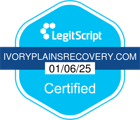Craving drugs or alcohol isn’t quite the same as wanting that first jolt of caffeine in the morning, desiring a chocolate chip cookie, or needing a smoke break.The intensity of brain and body dependence on illicit substances is why many people must go through a medical detox when starting rehabilitation treatment. This process often helps someone move beyond the physiological effects of addiction. In recovery, it’s critical to learn different ways to manage cravings. Here are some ideas that may help.
What are Cravings?
To stay on the right track for managing symptoms of alcohol use disorder (AUD) and substance use disorder (SUD), you must first learn to acknowledge and process cravings without succumbing to them. Addiction is a chronic illness, which means you’ll likely face some form of cravings for many months or even years to come.
Craving is a desire to experience the positive effects of alcohol or drug use, regardless of the known negative impact. A 2023 study indicates that “craving is a central feature of addiction and has been implicated as a predictor of future use.” So you’re not alone. In fact, the study authors note that “craving is now included as part of the diagnostic criteria for SUD and is the only diagnostic feature also recognized as part of early and sustained remission.”
Other studies have examined the link between the hunger hormone, ghrelin, and alcohol cravings. Researchers note that when people saw food images, “a brain region called the nucleus accumbens, which is associated with the reward-related brain chemical dopamine, lit up when ghrelin levels were elevated. On the other hand, when they viewed alcohol-related images, ghrelin lit up the amygdala, a brain structure that is important for emotions and stress and plays a key role in AUD.”
So cravings are often a combination of physiological and psychological factors. Fortunately, once you learn how to handle triggers and develop techniques to keep your cravings under control, they’ll decrease in both frequency and intensity.
15 Ways to Manage Cravings for Alcohol and Drugs
Managing drug and alcohol cravings can be challenging, but there are several strategies that help individuals cope effectively. Try these suggestions to expand on the therapeutic techniques you learned during treatment.
- Identify triggers. Recognize the situations, emotions, or people that trigger cravings.
- Avoid triggers. Steer clear of environments, situations, or people associated with drug or alcohol use to minimize exposure to triggers. Learn the value of saying no and establishing healthy boundaries.
- Reinforce good coping skills. Learn and practice healthy coping mechanisms such as deep breathing, mindfulness, or distraction techniques to deal with cravings when they arise.
- Stay active. Engage in regular physical activity or exercise, as it can help minimize stress, improve mood, and reduce symptoms of mental health issues.
- Maintain a healthy diet. A balanced and nutritious diet supports overall well-being and reduces cravings. Quality lean proteins stabilize blood sugar, as do whole grains. Colorful fruits and vegetables, especially berries and leafy greens, provide phytochemicals that support better brain health and lessen oxidative stress.
- Stay hydrated, too. Drink plenty of water throughout the day, as dehydration can sometimes be mistaken for cravings.
- Learn to urge surf. The method of urge surfing is a mindfulness-based technique that encourages you to approach and navigate cravings with conscious awareness rather than trying to resist or give in to them.
- Create a supportive environment. Surround yourself with positive influences and individuals who support your sobriety journey. Reach out to friends, family, and mutual aid groups for encouragement, understanding, and guidance during challenging times.
- Stay busy. Keep yourself occupied with hobbies, work, volunteering, or other activities to reduce idle time when cravings may intensify.
- Set goals. Establish short-term and long-term goals for yourself, and focus on achieving them to build a sense of purpose and accomplishment.
- Practice relaxation techniques. Methods such as meditation, yoga, mindfulness, or progressive muscle relaxation help reduce stress and cravings.
- Celebrate successes. Acknowledge and celebrate your progress and achievements, no matter how small, to reinforce positive behaviors.
- Utilize hotlines or support apps. Take advantage of helplines, support apps, or online communities for immediate assistance and encouragement during moments of intense cravings. If you’re not in crisis but still want to connect with someone, try a “warmline” such as The Hope Line, or visit warmline.org for more options.
- Educate yourself. Like any other chronic illness, it’s important to stay informed about advances in addition science, methods for long-lasting recovery, and relapse prevention strategies to better understand your triggers and cravings.
- Seek professional help. If cravings persist or become overwhelming, consider seeking guidance from a healthcare professional, therapist, or addiction counselor who can provide personalized support and treatment options.
Remember: managing cravings for alcohol and drugs is an ongoing process, and it’s essential to be patient and kind to yourself on your sobriety journey.
Ivory Plains: Your Partner in Long-Term Health
At our addiction rehabilitation program in Adair, Iowa, we provide additional resources to our clients to help them successfully navigate sober living. Through our confidential CaredFor app and various alumni services, you can trust that our experienced, board-certified team is always ready to help.








